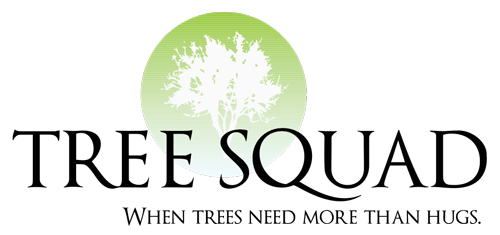Quality Tree Pest Control, Tree Insect Control & Disease Management
Tree Squad's tree pest control professionals are trained to recognize & address potentially harmful threats, including the following species:
Emerald Ash Borer
The emerald ash borer is an invasive pest that is highly destructive. It is native to northwestern Europe but has steadily increased its presence in North America during the last decade.
Twig Girdler & Twig Pruner
The twig pruner is known for killing trees from the inside out. It bores through twigs but leaves the outer bark intact. Consequently, the tree appears to be fine, but eventually the branch or twig will break off and reveal a hollow limb.
Two-Lined Chestnut Borer
The two-lined chestnut borer is an invasive pest that is native to North America. It burrows in trees that are already under duress and lives off the tree like a parasite until it dies.
Soft Scale
There are more than 1,000 different species of scale insects in North America alone. They tend to inhabit ornamental shrubs and greenhouse and indoor plants. They often appear as bumps on the tree rather than actual insects.
Elm Leaf Miner
Elm leaf miners feed on the tissues between the outer layers of elm leaves. As a result, leaves turn brown and fall from the tree prematurely. Large infestations of elm leaf miners seriously weaken elm trees and can stunt their growth or cause death.
Bronze Birch Borer
Flathead borers like the bronze birch borer feed and reproduce within stressed or dying trees. They are part of the family Buprestidae and are found in forests throughout Minnesota.
Ash Plant Bug
The ash plant bug is the most common tree-feeding pest in Minnesota. It feeds on the foliage of trees by piercing leaf tissue with needle-like mouths and ingests sap from the leaves. This drains the tree of nourishment and eventually leads to its weakening and death.
Spruce Spider Mite
Spruce spider mites insert needle-like mouthparts into tree tissue to extract fluids from within. Yellow spots then appear on the needles of the victimized plants or trees and results in a "bronzing" of the foliage above. It can cause leaves to start falling prematurely as well.
Honeylocust Plant Bug
The honeylocust plant bug feeds on the leaves of honeylocust trees and causes chlorosis, leaf distortion, and spotting. Leaves may begin falling from the tree prematurely in the event of a large infestation.
Sawflies
Sawflies are difficult to detect. Regular professional inspection of your trees is the only way to ensure a population of sawflies is not developing in or around your tree and causing significant damage. Contact us today to schedule a tree inspection.
Black Vine Weevil
Black vine weevils are known to attack more than 100 different species of ornamental plants and trees across the United States. They tend to feast on rhododendrons, azaleas, yews, and hemlocks.
Ash Flower Gall
Galls are created by insect/mite feeding or egg-laying. The ash glower gall poses a serious threat to ash trees because it is so difficult to detect. It is too small for the naked eye to distinguish and often goes undetected because of its brown, wood-like appearance.
Zimmerman Pine Moth
Zimmerman pine moths burrow into the trunk and branch bases of trees and lay larvae behind. As they develop, they feed off the tree and weaken its integrity, causing the trunk or limbs to bend, break, or fall and the tree to die.
Scales
Scales injure and kill trees by draining their nutrients. They insert straw-like mouths into the bark or fruit of a tree and suck the tree of all nourishment. Scales also feed on leaves and, in large numbers, can seriously damage their host.
Cooley Spruce Gall Adelgid
The cooley spruce gall adelgid preys on local plant life. Its most common hosts include the Colorado Blue Spruce, Picea pungens, Douglas-fir, and Pseudotsuga menziesii, which are popular for use as Christmas trees in the winter season.
Birch Leafminer
Birch leafminers are sawflies. They are closely related to bees and wasps and are one of the greatest threats to Birch trees on the North American continent.
Aphids
Minnesota has more than 300 species of aphids. Aphids on most Minnesota plants are matched to one host. This means they will feed on a specific tree or shrub and are not concerned with others types of vegetation.

